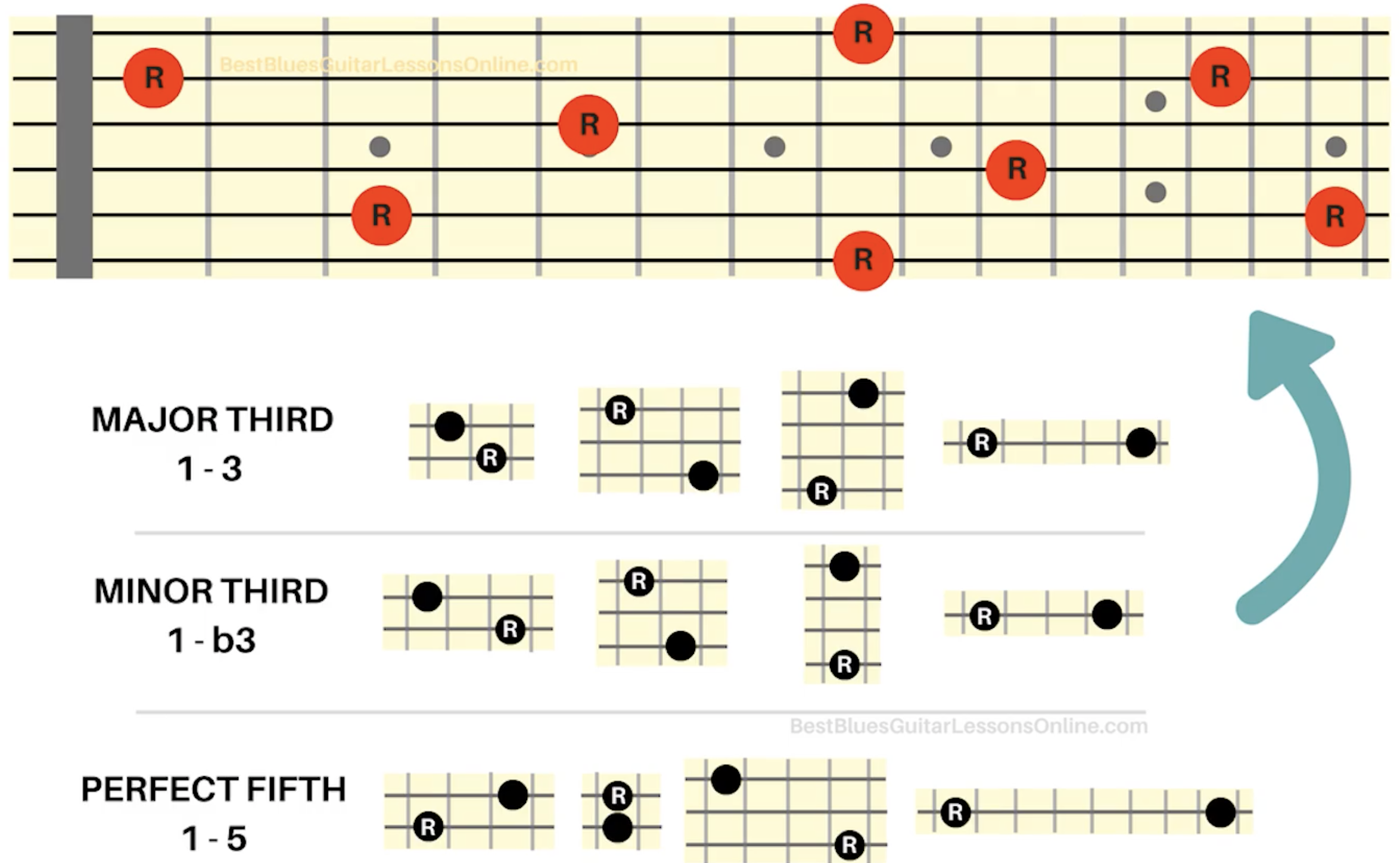Interval
What is an Interval?
An interval in music refers to the distance between two pitches. It is a fundamental concept used to describe the relationship between notes in terms of their pitch difference.
Key Characteristics of Intervals:
-
Types of Intervals:
- Melodic Interval: When two notes are played sequentially (one after the other).
- Harmonic Interval: When two notes are played simultaneously.
-
Measurement of Intervals:
- Intervals are measured in semitones (the smallest distance between two notes in Western music).
- Intervals are labeled by their numerical size and quality.
Interval Numbers vs. Semitone Count
While intervals are measured in semitones, their names (Second, Third, Fourth, etc.) are based on the number of letter names spanned, not the number of semitones.
Common Intervals:

- Perfect Intervals:
- Perfect Unison (P1): Same note.
- Perfect Fourth (P4): 5 semitones.
- Perfect Fifth (P5): 7 semitones.
- Perfect Octave (P8): 12 semitones.
Guitar tuning: E → A → D → G → B → E (Perfect 4th between all except G→B, which is a Major 3rd ⭐)
- Major and Minor Intervals:
- Major Second (M2): 2 semitones.
- Major Third (M3): 4 semitones.
- Major Sixth (M6): 9 semitones.
- Major Seventh (M7): 11 semitones.
- Minor Second (m2): 1 semitone.
- Minor Third (m3): 3 semitones.
- Minor Sixth (m6): 8 semitones.
- Minor Seventh (m7): 10 semitones.
| Interval Name | Abbreviation | Semitones |
|---|---|---|
| Perfect Unison | P1 | 0 |
| Major Second | M2 | 2 |
| Major Third | M3 | 4 |
| Perfect Fourth | P4 | 5 |
| Perfect Fifth | P5 | 7 |
| Major Sixth | M6 | 9 |
| Major Seventh | M7 | 11 |
| Perfect Octave | P8 | 12 |
- Augmented and Diminished Intervals:
- Augmented: One semitone larger than perfect or major intervals (e.g., Augmented Fourth, A4, 6 semitones).
- Diminished: One semitone smaller than perfect or minor intervals (e.g., Diminished Fifth, d5, 6 semitones).
Examples:

- The interval between C and E is a Major Third (M3).
- The interval between G and D is a Perfect Fifth (P5).
- The interval between A and Bb is a Minor Second (m2).
Why Intervals Matter:
- Melody and Harmony: Intervals form the building blocks of scales, chords, and melodies.
- Music Theory: Understanding intervals is crucial for analyzing and composing music.
- Instrumental Practice: Intervals help guitarists and pianists navigate their instrument more effectively.